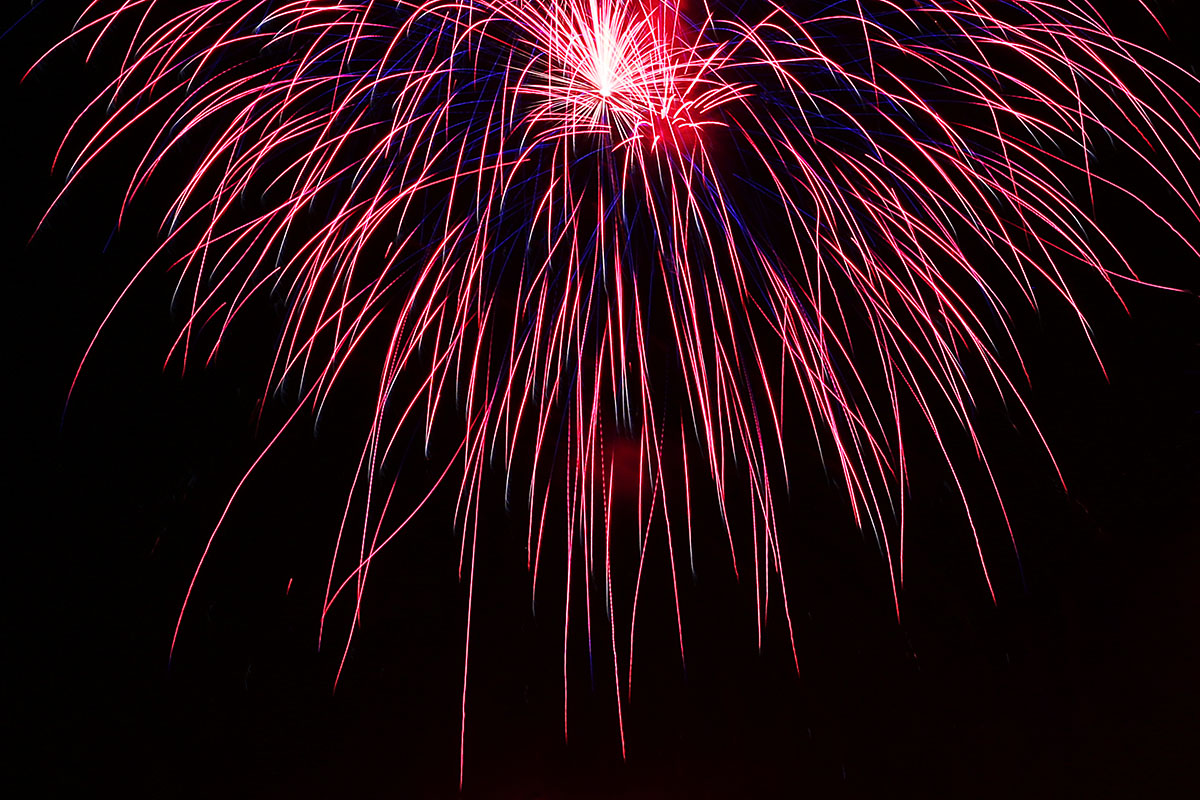Time exposure of the fireworks display in honor of our National Day.
—
Fireworks contain an explosive powder, along with a binding paste, mixed with signature chemicals (usually metal salts) responsible for its bright colors. When fireworks are ignited, the heat causes the compounds to undergo a chemical reaction, releasing energy in the form of light.
These are the elements used in fireworks and the colors they produce: Blue – copper chloride; green – barium chloride; orange – calcium chloride; pink – lithium chloride; purple – strontium and copper salts are mixed: red – strontium carbonate; silver- magnesium and aluminum; white – magnesium; yellow – sodium nitrate.
In addition to the metal salts, the colors can be further modified by adding various other elements to create different shades and hues. To make a deeper red color, e.g., nitrates are added to the strontium salts. The specific combinations and concentrations of these chemicals determine the intensity and duration of the colors produced.
Blue is the hardest to achieve because it requires a very high combustion temperature. Thus, the explosion of the fireworks must be really hot.
